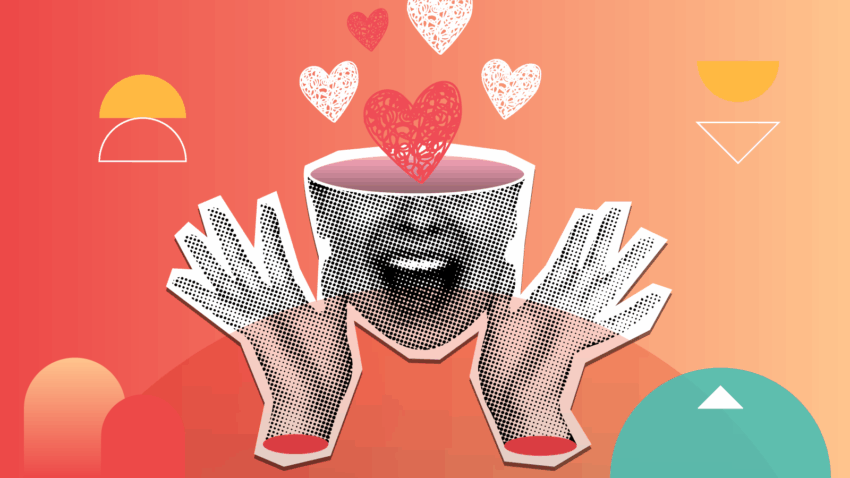Emotional intelligence puts the human back in marketing, helping brands cut through biases and connect meaningfully.
By Nic Climer, Executive Creative Director, RAPP
Cognitive biases are sneaky little things, aren’t they? They work behind the scenes, shaping decisions in ways we don’t always recognize, especially in marketing. Confirmation bias and the halo effect are two of the most common culprits. They subtly nudge our strategies, influencing how we position brands, craft campaigns, and ultimately connect with people. Two biases stand out in particular: confirmation bias and the halo effect.
Confirmation bias pushes marketers to double down on ideas that align with their audience’s beliefs. It’s the mechanism behind GM’s electrification campaign, which reinforces consumer perceptions of the company as a leader in innovation and sustainability. Highlighting their electric vehicles, like the Cadillac Lyriq and Chevrolet Bolt EV, caters to eco-conscious buyers who already trust legacy automakers to deliver reliability alongside progress.
The halo effect, on the other hand, lets a single positive attribute elevate a brand’s entire image. Cotopaxi’s “Gear for Good” ethos is a prime example, projecting an image of sustainability and social responsibility that extends to its entire product lineup. Similarly, Burton leverages its snowboarding heritage to build trust for products well beyond winter sports.
However, while these biases can drive brand loyalty, they also carry risks. Leaning too heavily on them can blind marketers to unmet needs, untapped audiences, or shifts in cultural values. That’s where emotional intelligence (EI) comes into play.
Emotional intelligence as a marketing compass
Emotional intelligence — marked by self-awareness, empathy, and social awareness — is a powerful tool for challenging biases and creating campaigns that resonate with diverse audiences.
Self-awareness helps marketers recognize their assumptions. It prompts critical questions like:
- Are we unintentionally excluding specific audiences?
- Is this campaign speaking to everyone it should?
This level of reflection is essential for avoiding confirmation bias, which can trap teams in echo chambers. We challenge these blind spots by engaging in thought-provoking sessions with experts who help us uncover biases we might not even realize we hold.
Empathy is the next step, and it’s where the magic really happens. Empathy goes beyond demographic data. It’s about understanding your audience’s values, aspirations, and frustrations. For example, Patagonia’s “Don’t Buy This Jacket” campaign resonated deeply with environmentally conscious consumers by aligning with their values, even at the expense of immediate sales. Algorithms didn’t drive that authenticity; it stemmed from genuine empathy for their audience’s priorities.
Social awareness ties it all together. It’s not enough to ride on the goodwill of a halo effect; we need to ask whether our brands are actually delivering on their promises. Patagonia’s campaigns work because they go beyond messaging—they challenge customers to hold the brand accountable. That’s the kind of relationship that builds trust, even when it’s uncomfortable.
Strategies to reduce cognitive bias
Avoiding biases isn’t easy, but it’s essential. Here are some strategies to live by:
Start with diverse teams
Let’s face it: Our work is only as good as the people behind it. If your team doesn’t reflect the world, your campaigns won’t either. Prioritizing diverse hires isn’t just a DE&I initiative — it’s a creative imperative.
Seek out the quiet voices
The loudest people in the room aren’t always the ones with the best ideas. Listen to the intern who hesitates to speak up, the team member whose perspective doesn’t match the majority. Their insights are often the ones that break through our blind spots.
Challenge your assumptions
Regularly ask, “What if we’re wrong?” Testing new ideas, exploring unexpected audience segments, or even flipping your messaging entirely can reveal opportunities you didn’t know existed.
Use empathy mapping
Step into your audience’s shoes. What do they need? What excites them? What frustrates them? Empathy maps can help you see beyond demographics and into real human experiences.
Commit to ongoing learning
Biases are deeply ingrained, and unlearning them takes time. Host workshops on unconscious bias, cultural intelligence, and empathy. Keep the conversation going — it’s the only way to stay sharp.
Measuring emotional intelligence in marketing
You can’t chart emotional intelligence on a spreadsheet, but its impact shows up in the results that matter:
- Campaign resonance: Use sentiment analysis or focus groups to see if your audience feels understood. Engagement thrives on authenticity, making genuine connections a necessity, not just a bonus.
- Inclusivity metrics: Representation matters. Diversity audits and surveys can reveal whether your messaging truly reflects your audience.
- Customer loyalty: Emotional intelligence builds trust. Stronger loyalty shows up in retention, repeat purchases, and word-of-mouth advocacy.
- Team dynamics: Great campaigns start with great teams. Training in empathy and bias awareness fosters collaboration and creativity, laying the groundwork for smarter marketing.
EI and the future of marketing
The best marketing resonates because it’s built on understanding, not assumptions. When we bring emotional intelligence into our work, we create campaigns that reflect the richness of the world around us — its diversity, its complexity, its beauty. We don’t just tell stories; we tell the right stories, for the right people, in the right way.
In a world where consumers expect brands to be human, EI is our edge. Let’s use it to build work that not only succeeds but also makes a difference.
About the Author
Nic Climer is the Executive Creative Director at RAPP, bringing over 25 years of experience across interactive, traditional, viral, and social media. An award-winning art director and writer with expertise spanning industries from CPG to financial services, Nic is driven by innovation, fueled by data, and committed to building diverse teams to transform the future of the marketing industry.
